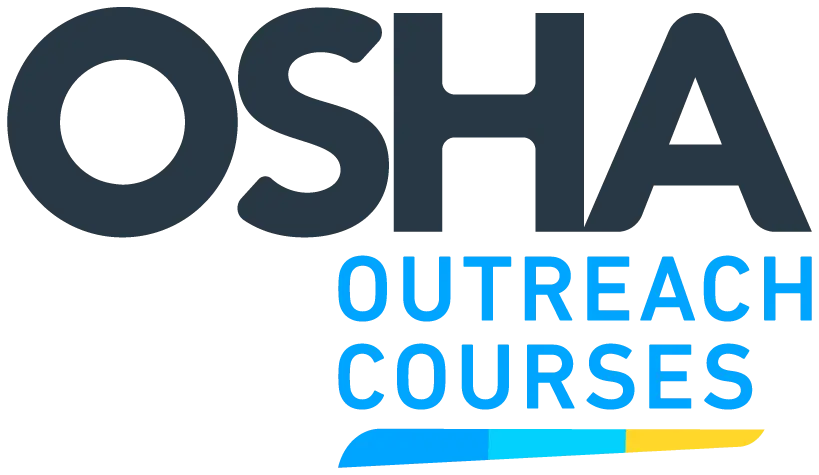Reasonable Suspicion Training (US) Suite
Practice Test
Reasonable Suspicion Training (US) Suite Quiz
Complete this quiz to earn an exclusive Certificate of Completion from OSHAOutreachCourses.com. Read all the questions carefully and mark the right answers to earn the perfect score. Best of luck!
Total Questions: 5
Why Workers Choose Us
| features |  |
other providers |
|---|---|---|
| Instant Downloadable Certificate | ||
Free Study Guide

|
||
Discounts For Businesses

|
||
| No Hidden Cost | ||
Mobile Compatibility

|
||
Flexible Learning

|
Satisfied Customers
Course Outline
Reasonable Suspicion Training for Alcohol and Substance Abuse (US)
-
1. Introduction
- Welcome
- Introduction
- Learning Objectives
-
2. Employer Responsibilities
- Substance Abuse Prevention Regulations
- What Are Safety-Sensitive Positions?
- DOT FMCSA Drug and Alcohol Policy Summary
- Your Company’s Responsibilities
- Knowledge Check: Company Responsibilities
-
3. Violations
- What Is a Drug and Alcohol Policy Violation?
- Additional Drug and Alcohol Rule Violations
- Prescription Medications
- Driver Prohibitions
- Prescription Medication Exceptions
- OTC Medications
- Learning Activity: Drug and Alcohol Policy Violations
-
4. Step 1: Initial Suspicion
- Identifying Employees Who May Be Using Drugs or Alcohol
- Learning Activity: Identifying Drug or Alcohol Users
- Step 1: Have an Initial Suspicion
- Workplace Indicators and Substance Abuse
- Performance Problems Don’t Always Equal Substance Abuse
- Focus on Performance
- Presence of Substances
- Physical Indicators
- Emotional Indicators
- Action Indicators
- Absenteeism
- Safety-Related Incidents
- Work Patterns
- Relationships
- Knowledge Check: Initial Suspicion
-
5. Step 2: Conduct an Employee Interview
- Identifying Employees Who May Be Using Drugs or Alcohol
- Step 2: Conduct an Employee Interview
-
6. Step 3: Determine Reasonable Suspicion
- Identifying Employees Who May Be Using Drugs or Alcohol
- What Is Reasonable Suspicion?
- Step 3: Reasonable Suspicion of Drug and Alcohol Use
- Knowledge Check: Reasonable Suspicion
-
7. Step 4: Conduct Testing
- Identifying Employees Who May Be Using Drugs or Alcohol
- Reasonable Suspicion and Drug and Alcohol Testing
- Step 4: Conduct Testing
- Substance Testing
- Alcohol Testing – Process
- Alcohol Testing – Results
- Drug Testing – Process
- Potential Problems with Drug Testing
- Alcohol and Drug Testing – Incomplete Specimens
- Accidents and Drug and Alcohol Testing
- Knowledge Check: Conduct Testing - Scenario 1
- Knowledge Check: Conduct Testing - Scenario 2
- Knowledge Check: Conduct Testing - Scenario 3
- Knowledge Check: Conduct Testing - Scenario 4
- Knowledge Check: Conduct Testing - Scenario 5
- Knowledge Check: Conduct Testing - Scenario 6
- Drug and Alcohol Testing
- Knowledge Check: Conduct Testing
-
8. Step 5: Help the Employee Home
- Identifying Employees Who May Be Using Drugs or Alcohol
- Step 5: Help the Employee Home
- Knowledge Check: Help the Employee Home
-
9. Step 6: Follow Up and Document
- Identifying Employees Who May Be Using Drugs or Alcohol
- Step 6: Follow Up and Document
- Additional Testing
- Consequences
- Knowledge Check: Follow Up and Document
-
10. Drivers Returning to Work
- FMCSA Clearinghouse
- Clearinghouse Use
- Checking the Clearinghouse
-
11. Conclusion
- Roadblocks to an Effective Drug and Alcohol Policy
- Your Responsibilities
- Summary
Drugs and Alcohol: The Facts (US)
-
1. Introduction
- Welcome
- Introduction
- Why Take This Training?
- Course Overview
- Learning Objectives
-
2. Definition
- Substance Abuse: What It Is
- How Misused Substances Are Obtained
- Learning Activity: Question 1 – Can You Spot Abuse?
- Learning Activity: Question 2 – Can You Spot Abuse?
- Learning Activity: Question 3 – Can You Spot Abuse?
- Learning Activity: Question 4 – Can You Spot Abuse?
- Learning Activity: Question 5 – Can You Spot Abuse?
- Learning Activity: Summary
-
3. Effects of Substance Abuse
- What Substance Abuse Does to You
- Physical Consequences of Substance Abuse
- Mental and Emotional Consequences
- Individual Consequences of Substance Abuse
- Family Consequences of Substance Abuse
- Knowledge Check: Personal Effects of Substance Abuse
-
4. Consequences in the Workplace
- Employer Consequences of Substance Abuse
- Substance Abusers in the Workforce
- Substance Abuse Regulations
-
5. The Most Commonly Abused Substance
- Knowledge Check: What Do You Think?
- Meet Gary
- Alcohol Abuse
- “Secondhand Drunk”
- When Alcohol Abusers Won’t Get Help
- Key Takeaways
- Knowledge Check: Alcohol Abuse
- Knowledge Check: Alcohol Abuse
-
6. Alcohol Abuse
- Alcohol Abuse
- Blood Alcohol: The Measure
- Commercial Drivers and Pilots
- Learning Activity: Blood Alcohol Content
- Alcohol and Motor Vehicle Accidents
- Alcohol Problems: The Range
- Four Questions to Identify Problems with Alcohol
- Knowledge Check: Alcohol Abuse
-
7. Illicit Drug Use
- Illicit Drug Use Covered in This Course
-
8. Cannabis
- Cannabis Products
- Effects of THC
- Knowledge Check: Cannabis
-
9. Cocaine
- Cocaine Products
- Physical Effects of Cocaine Products
- Mental and Emotional Effects of Cocaine Products
- Knowledge Check: Cocaine
-
10. Ecstasy
- Ecstasy
- Physical Effects of Ecstasy
- Mental and Emotional Effects of Ecstasy
- Knowledge Check: Ecstasy
-
11. PCP
- Phencyclidine (PCP)
- PCP Effects
- Knowledge Check: PCP
-
12. Opiates
- Opiates
- Effects of Opiates
- Knowledge Check: Opiates
-
13. How to Help
- What Can Be Done When Someone Won’t Get Help?
- Learning Activity: How to Help
-
14. Steps Toward Risk Reduction
- What You Can Do for Yourself
- What Companies Can Do
-
15. Summary
- Summary
Cannabis Awareness
-
1. Introduction
- Welcome
- Introduction
- Knowledge Check: Rights
- Knowledge Check: Impairment
- Feedback: Impairment
- Learning Objectives
-
2. Properties of Cannabis
- Frequently Asked Questions
- Learning Activity: Cannabis Overview
-
3. Effects
- Effects May Vary
- Common Effects of THC
- Physiological Changes
- Knowledge Check: How Long?
- Feedback: How Long?
- Testing
- Positive Testing
- Did You Know?
-
4. Abuse
- Dependence
- Signs of Dependence
- Withdrawal Symptoms
- Health Effects of Smoke
- Knowledge Check: Abuse
-
5. Strategies
- Employer Policy
- Ban Smoking and Vaping
- Safety-Sensitive Positions
- Workplace Safety Is Paramount
- Laws, Policies and Common Sense
- Cannabis FAQ Poster
- Knowledge Check: Strategies
- Feedback: Strategies
-
6. Putting It All Together
- Scenarios
- Scenario: Pilot
- Knowledge Check: Pilot
- Feedback: Pilot
- Scenario: Lab Technician
- Knowledge Check: Lab Technician
- Feedback: Lab Technician
-
7. Conclusion
- Summary
Group Discount for Corporate Accounts

VIDEO TESTIMONIAL
FAQ
What employees will learn in DOT reasonable suspicion training?
Is reasonable suspicion training for supervisors necessary?
What is FMCSA reasonable suspicion training?
Who needs to undergo DOT reasonable suspicion training?
How long does FMCSA reasonable suspicion training take?
What happens if supervisors fail to complete DOT reasonable suspicion training?
Join our mailing list
Get announcements, industry updates and promotional offers.
17350 TX-249 Ste 220 19204, Houston, TX 77064, United States







